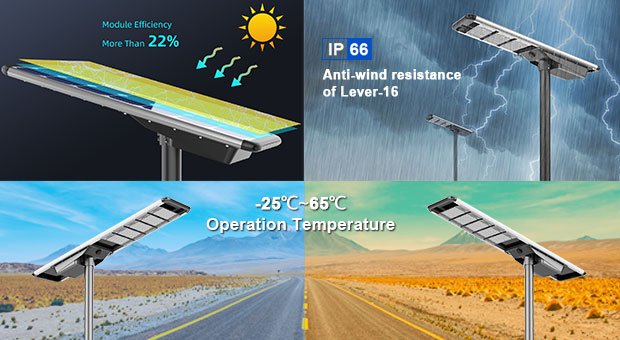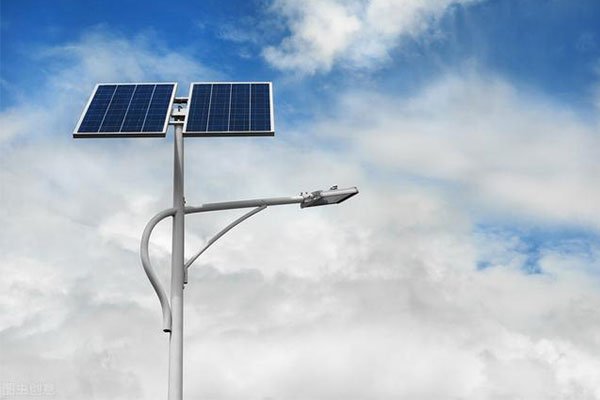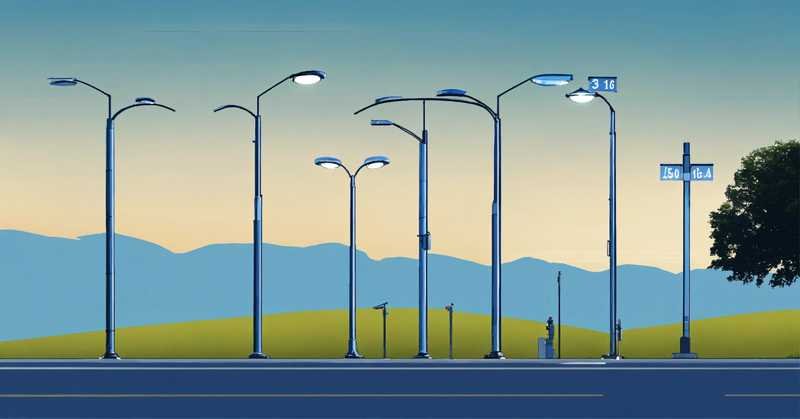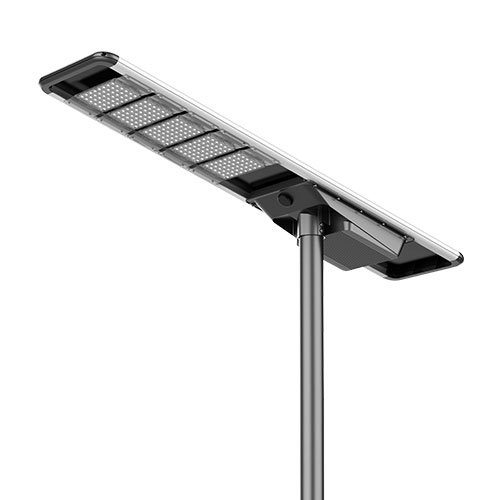Solar street lights have gained popularity in recent years as an eco-friendly, cost-effective alternative to traditional street lighting. By harnessing the power of the sun, they provide illumination for urban and rural areas alike, while reducing energy consumption and environmental impact.
Solar street lights are powered by renewable solar energy, offering numerous benefits such as environmental sustainability, cost savings, and autonomy. As the world continues to move toward green energy solutions, solar street lights are becoming a viable option for communities worldwide.
But how exactly do solar street lights work? Let’s break it down step by step, from capturing sunlight to providing reliable lighting throughout the night.
How Solar Street Lights Work: Basic Overview

Step-by-Step Process
Solar street lights operate by capturing solar energy during the day, storing it for nighttime use, and then converting it into light through energy-efficient LED bulbs. Here is a detailed look at how solar street lights work:
- Solar Panel: The panel captures sunlight during the day.
- Rechargeable Battery: The captured energy is stored in a battery for use at night.
- LED Light: The stored energy powers the LED light after sunset.
- Smart Controller: Regulates the entire system, ensuring efficient use of energy.
In essence, solar street lights rely on sunlight to power their operation, making them a sustainable solution for public lighting.
Key Components of a Solar Street Light
1. Solar Panel: Capturing the Sun's Energy
The solar panel is the heart of the solar street light system. It captures sunlight and converts it into electricity. Solar panels come in two main types: monocrystalline and polycrystalline.
- Monocrystalline Solar Panels: Made from a single crystal structure, these panels are more efficient and provide higher power output.
- Polycrystalline Solar Panels: These are made from multiple silicon crystals, and although they are less efficient, they are often more affordable.
Placement & Efficiency:
The placement of solar panels is critical for efficiency. For maximum energy absorption, the panels need to be positioned in a location that receives ample sunlight throughout the day. The optimal angle and direction depend on the geographical location of the street light.
2. Rechargeable Battery: Storing Solar Energy
The energy captured by the solar panel during the day is stored in a rechargeable battery, typically located within the light fixture. This stored energy is used to power the light at night.
- Lead-Acid Batteries: While inexpensive, these batteries are heavy and have a shorter lifespan compared to newer options.
- Lithium-Ion Batteries: These are more expensive but offer higher efficiency, longer lifespan, and better performance in various weather conditions.
Battery Life & Maintenance:
The battery's lifespan is crucial for the overall performance of the solar street light. In general, lithium-ion batteries last longer than lead-acid batteries. Battery maintenance varies depending on the type of battery used, but most systems require little maintenance compared to traditional streetlights.
3. Smart Controller: Regulating Energy Flow
The smart controller plays a key role in managing the energy generated by the solar panel and stored in the battery. It ensures that the energy is used efficiently and controls when the light turns on and off. There are two primary types of controllers:
- PWM (Pulse Width Modulation): Controls the amount of energy used by adjusting the voltage supplied to the LED.
- MPPT (Maximum Power Point Tracking): Optimizes the energy harvested from the solar panel by adjusting the power flow, ensuring that the system operates at peak efficiency.
Key Features of Smart Controllers:
- Dusk-to-Dawn Control: The light automatically turns on at dusk and off at dawn.
- Time Control: Lights can be programmed to operate at specific times.
- Motion Sensing: Some systems adjust the brightness based on motion detection, conserving energy when no movement is detected.
- Low Voltage Disconnect: Prevents the battery from over-discharge, ensuring longevity.
4. Motion Sensor: Optimizing Energy Use
Motion sensors are commonly integrated into solar street lights to help optimize energy consumption. These sensors detect activity within their range and adjust the brightness accordingly.
- Microwave Sensors: Detect motion by emitting microwave signals and measuring the reflection from objects.
- Infrared Sensors: Detect movement by sensing changes in infrared radiation.
Energy Conservation:
Motion sensors allow solar street lights to dim or turn off when no motion is detected, saving energy during quieter periods. This is especially useful in areas with low foot traffic or vehicle movement.
5. Remote Management Software: Monitoring & Control
In addition to the physical components, modern solar street lights often come with remote management software. This software allows for real-time monitoring and control of the lighting system, even from a remote location.
Benefits of Remote Monitoring:
- Cost Savings: By monitoring the lights remotely, maintenance issues can be identified and addressed quickly, reducing costs.
- Performance Optimization: The software allows for adjustments to be made to ensure that the lights are always operating at peak efficiency.
Advanced Features of Smart Solar Street Lights
Automatic Dimming & Light Intensity Control
Modern solar street lights often come with automatic dimming features, where the brightness of the light adjusts based on the time of day or detected motion.
- LED vs. Traditional Lighting: LED technology is much more energy-efficient than traditional lighting, making it ideal for solar-powered street lights. LEDs use less power, have a longer lifespan, and require less maintenance.
- Energy Efficiency: Solar street lights powered by LEDs consume significantly less energy compared to conventional street lighting, reducing the carbon footprint and energy costs.
Environmental Impact
Solar street lights have a positive environmental impact by reducing dependence on grid electricity, which is often generated from fossil fuels. By utilizing solar energy, they help lower greenhouse gas emissions and promote sustainability in urban and rural areas.
Real-World Applications of Solar Street Lights
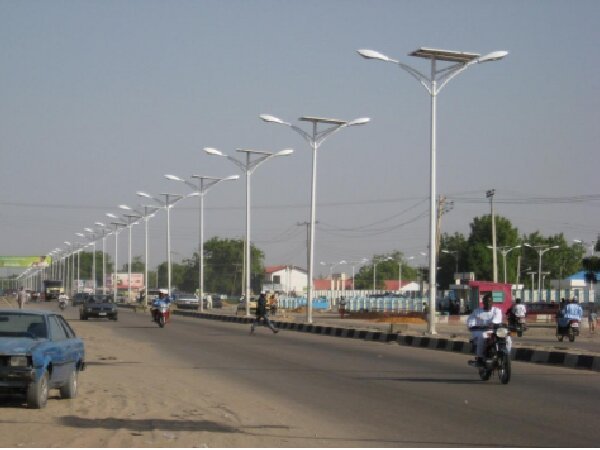
Global Adoption
Countries across the world are adopting solar street lights as part of their efforts to reduce energy consumption and enhance public lighting.
- Africa: Many African nations, where grid electricity is unreliable or nonexistent, are using solar street lights to provide consistent lighting to their communities.
- Asia: Countries like India and China have been integrating solar lighting solutions into urban infrastructure.
Case Studies
- India: A large-scale solar street lighting project in India has illuminated thousands of rural villages, providing affordable lighting to communities without access to the grid.
- Kenya: Solar street lights in Kenya have helped improve safety in urban areas and reduced reliance on expensive, polluting kerosene lamps.
Challenges and Considerations in Implementing Solar Street Lights

Weather Conditions
Solar street lights are highly dependent on sunlight, and their performance can be affected by cloudy or rainy weather. In regions with frequent overcast conditions, it's crucial to select systems with larger battery capacities to ensure reliable performance.
Installation Costs vs. Long-Term Savings
While the initial cost of solar street lights can be higher than traditional lights, the long-term savings in energy costs and maintenance make them a wise investment. Over time, the savings on electricity bills and reduced need for frequent repairs or replacements result in a positive return on investment.
Why Choose Solar Street Lights?
Cost-Effectiveness
Solar street lights can significantly reduce electricity bills and minimize maintenance costs. With no need for costly grid connections, the ongoing costs of operation are also lower than traditional streetlights.
Environmental Responsibility
Solar energy is a renewable resource that doesn't rely on fossil fuels. By choosing solar street lights, you are making an environmentally responsible choice, helping reduce emissions and contributing to sustainability efforts.
Energy Independence
Solar street lights offer energy independence by utilizing the sun's energy. They operate autonomously, without the need for grid electricity, which is particularly beneficial in areas with unreliable or no access to the power grid.
Conclusion
Solar street lights offer a sustainable, cost-effective, and eco-friendly solution to urban and rural lighting needs. With advanced features like motion sensors, smart controllers, and remote management, they provide reliable lighting while reducing environmental impact. Consider solar street lights for your next project and join the growing movement toward sustainable energy.


